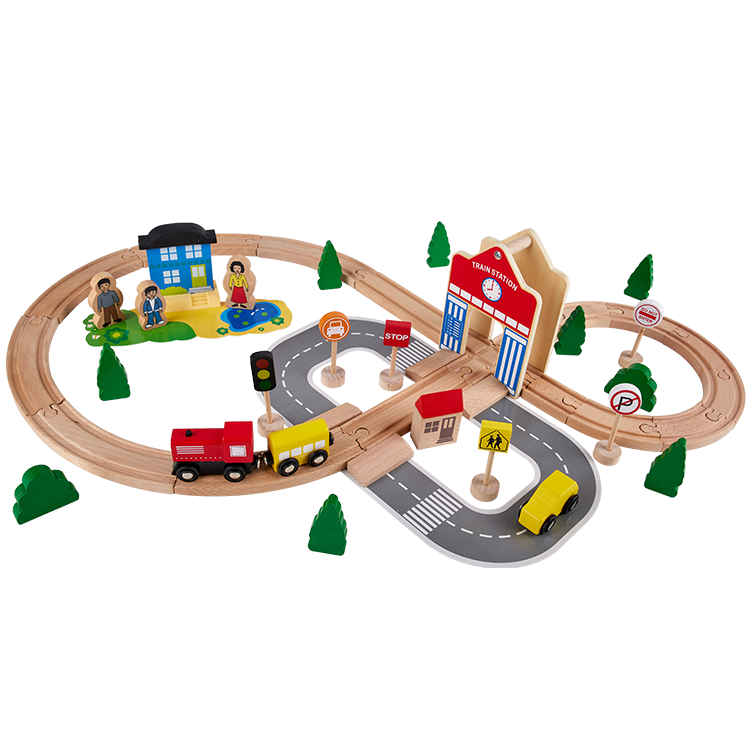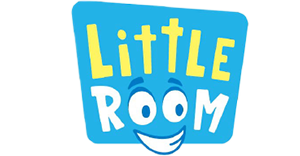Email format error
Email cannot be empty
Email already exists
6-20 characters(letters plus numbers only)
The password is inconsistent
Email format error
Email cannot be empty
Email does not exist
6-20 characters(letters plus numbers only)
The password is inconsistent

News
Happy Arts & Crafts , your reliable partner for OEM/ODM business!

Exploring the World of Play: The Montessori Educational Railway Toy
The Montessori method of education is renowned for its focus on independent learning, respect for a child’s natural psychological development, and its ability to create environments conducive to the exploration of the world through play. Among the various tools employed in this educational approach, the Montessori educational railway toy stands out as a particularly engaging and developmental asset. This blog post will take you on a journey through the multifaceted benefits of this toy and how it can be seamlessly integrated into the Montessori learning environment.
I. The Montessori Philosophy and Play
A. Montessori Principles
The Montessori philosophy, developed by Dr. Maria Montessori, is based on the belief that children learn best in an environment that supports and respects their individual growth. Key principles include prepared environments, self-directed learning, and tactile learning materials that are designed to stimulate the senses and the natural curiosity of children.
B. The Role of Play in Montessori Education
In Montessori education, play is not a break from learning; it is the mechanism through which learning occurs. Play is considered serious work for children, and it is through play that they develop essential skills, understand their environment, and build their cognitive abilities.
C. How Toys Fit into the Montessori Approach
Toys in the Montessori environment are carefully selected to align with educational goals. They are typically made of natural materials and are designed to encourage exploration, concentration, and the development of fine motor skills. The Montessori educational railway toy is a prime example of a toy that meets these criteria and offers a rich educational experience.
II. The Montessori Educational Railway Toy: An Overview
A. What is a Montessori Educational Railway Toy?
A Montessori educational railway toy is a playset that includes tracks, trains, and various other components that can be assembled in numerous ways. It is designed to be open-ended, allowing children the freedom to create their own railway systems, encouraging creativity and problem-solving.
B. Key Features of Montessori-Compatible Railway Toys
Montessori-compatible railway toys are characterized by their simplicity, durability, and adaptability. They are often made from high-quality wood and are free from overwhelming electronic features that can detract from the learning experience. Instead, they offer a hands-on, sensory-rich play that is aligned with Montessori principles.
C. The Benefits of Railway Play for Child Development
Railway play can significantly contribute to a child’s development. It enhances spatial reasoning, encourages the understanding of cause and effect, and provides an excellent platform for imaginative play. Additionally, it can be a social activity that fosters communication and collaboration when played with others.
III. Cognitive Development and the Railway Toy
A. Enhancing Problem-Solving Skills
As children work out how to connect tracks and ensure their trains can travel smoothly, they engage in complex problem-solving. They learn to anticipate issues and think critically about how to resolve them, which is a skill that translates well into academic learning and everyday life.
B. Encouraging Spatial Awareness and Planning
Building a functional railway requires an understanding of space and the ability to plan ahead. Children must consider the layout of their tracks, the placement of bridges or tunnels, and the spatial relationship between different parts of their railway system.
C. Understanding Cause and Effect
The toy is an excellent tool for teaching cause and effect. Children quickly learn that certain actions will lead to specific outcomes, such as the speed at which a train must travel to navigate a curve without derailing.
IV. Social and Emotional Growth Through Railway Play
A. Sharing and Cooperation
When children play with a railway toy together, they learn the importance of sharing and taking turns. They must work cooperatively to build their railway system, which can enhance their ability to work as part of a team and develop their social skills.
B. Developing Patience and Persistence
Railway play often involves trial and error, teaching children the value of patience and persistence. They learn that sometimes, achieving the desired outcome takes time and multiple attempts, which is a valuable life lesson.
C. Fostering Imagination and Storytelling
The toy is a springboard for imaginative play. Children create stories around their railway adventures, developing their narrative skills and expanding their creativity.
V. Fine Motor Skills and Physical Benefits
A. Improving Hand-Eye Coordination
Assembling tracks and manipulating small train components require precise movements, which can significantly improve hand-eye coordination.
B. Dexterity and Fine Motor Skill Development
The pincer grasp used to connect train cars and place tracks is an excellent exercise for developing fine motor skills and dexterity in young children.
C. The Role of Physical Play in Early Childhood
Physical play is crucial in early childhood, and the toy encourages children to engage in movement as they build and play with their railway systems.
VI. Integrating the Railway Toy into the Montessori Environment
A. Setting Up the Play Area
Creating a dedicated space for the railway toy can help children focus on their play. The area should be accessible, organized, and inviting, with all components within easy reach.
B. Incorporating Montessori Teaching Methods
Encourage children to explore the railway toy independently, allowing them to experience the joy of discovery and learning through their own actions. Offer guidance when necessary, but allow the child’s curiosity to lead the way.
C. Encouraging Independent Play and Learning
The toy is designed to be self-correcting, meaning that children can learn from their mistakes without direct adult intervention. This fosters independence and confidence in their abilities.
VII. Choosing the Right Montessori Educational Railway Toy
A. Material Considerations: Wood vs. Plastic
Wooden railway toys are often preferred in Montessori settings due to their durability, natural feel, and aesthetic appeal. They are also more environmentally friendly than plastic alternatives.
B. Age-Appropriate Features and Designs
Select a railway toy that is appropriate for the child’s age and developmental stage. For younger children, look for simple designs with larger components, while older children may enjoy more complex sets with additional features.
C. Safety and Durability
Safety is paramount when choosing any toy. Ensure that the railway set is made from non-toxic materials, has smooth edges, and is sturdy enough to withstand regular play.
VIII. Extending the Learning: Activities and Ideas
A. Combining the Railway with Other Montessori Materials
Integrate the railway toy with other Montessori materials to extend learning opportunities. For example, use counting beads to represent passengers or create a color-matching game with the trains and colored blocks.
B. Thematic Play and Educational Objectives
Create themes around the railway play to teach specific concepts. For instance, a “community helpers” theme could involve discussing the roles of train conductors and engineers.
C. Creative Extensions: Art, Music, and Beyond
Encourage children to draw maps of their railway systems or compose songs about their train adventures. These creative extensions can enrich the play experience and provide a well-rounded educational approach.
IX. The Montessori Educational Railway Toy in Action
A. Real-Life Success Stories
Share stories of children who have benefited from playing with the railway toy. Highlight how it has helped them develop specific skills or overcome challenges.
B. Parent and Educator Insights
Gather insights from parents and educators on how the railway toy has been integrated into their teaching and what benefits they have observed.
C. Children’s Perspectives on Railway Play
Include quotes or stories from children about their experiences with the railway toy. Their perspectives can provide valuable insight into the toy’s impact on their learning and enjoyment.
X. Maintaining and Caring for Your Montessori Railway Toy
A. Cleaning and Sanitization
To ensure the safety and longevity of your railway toy, regular cleaning is essential. Start by choosing cleaning products that are non-toxic and child-friendly. For wooden components, use a damp cloth with mild soap to wipe down surfaces, avoiding excessive water that can warp the wood. For plastic parts, a gentle disinfectant can be used. It’s important to clean the tracks and trains regularly, especially if they are shared among children, to prevent the spread of germs.
B. Storage Solutions
Proper storage is key to maintaining the quality of your railway toy. Invest in durable storage containers that can hold the toy’s components securely. Label the containers based on the contents, which makes it easier for children to find what they need and to put things away after play. Consider a storage solution that allows the toy to be accessible to children without adult help, fostering independence as encouraged by Montessori principles.
C. Longevity and Sustainability
To ensure the railway toy lasts through years of play, choose high-quality materials that can withstand frequent use. Sustainable materials like solid wood are not only durable but also eco-friendly. Teach children to handle the toy with care, and check periodically for any signs of wear or damage that could pose safety risks. By maintaining the toy well, you also contribute to sustainability by reducing the need for replacements.
XI. The Future of Montessori Toys: Innovation and Trends
A. Technological Integration in Montessori Materials
As technology advances, there is potential for integrating digital elements into Montessori materials without compromising the philosophy’s emphasis on hands-on learning. For example, RFID chips could be embedded in railway pieces to provide feedback or challenges to children as they play, enhancing the educational value of the toy.
B. The Growing Popularity of Eco-Friendly Toys
Eco-consciousness is shaping the toy industry, and Montessori toys are no exception. Future Montessori railway toys may feature materials sourced from sustainable forests, recycled plastics, or biodegradable substances. This shift not only protects the environment but also teaches children the importance of sustainability.
C. Predictions for Future Montessori Educational Tools
Looking ahead, Montessori educational tools will likely continue to evolve to meet the changing needs of children and society. We can expect to see more inclusive toys that cater to diverse learning styles and needs, as well as toys that address global themes such as cultural awareness and environmental stewardship.

Conclusion:
The Montessori educational railway toy is a testament to the enduring power of play in the development of young minds. It is a versatile tool that supports a wide range of developmental milestones, from fine motor skills to complex cognitive processes. Through careful maintenance and a forward-thinking approach to selection, parents and educators can ensure that this toy remains a valuable part of the learning landscape for years to come. As we embrace the future of Montessori toys, we can anticipate a continued focus on innovation, sustainability, and the intrinsic joy of learning that Maria Montessori herself championed. The railway toy, with its endless possibilities for growth and discovery, is poised to remain a beloved and effective educational resource in the Montessori tradition.


